9 Types of Grass in Florida (With Pictures)
-
Pete Ortiz
- Last updated:
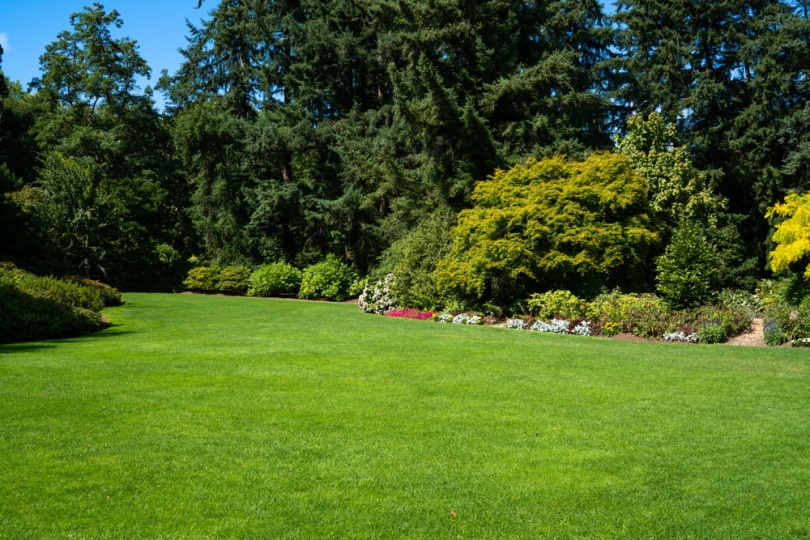
Have you ever desired to grow a lawn in Florida but aren’t sure about the best grass to use? There are numerous types of grass, but not all suit the warm and humid climate in this state.
Examples of the best grass to grow here are St Augustine, Zoysia, Bermuda, Centipede, Bahia, and Buffalo, among others. These types of grass thrive in warm conditions, are drought and heat tolerant, and love full sun exposure.
This article looks into the best grass to grow in Florida. Read through the characteristics of each and pick the best for your lawn.
The 9 Top Choices for Your Lawn in Florida
1. St. Augustine Grass
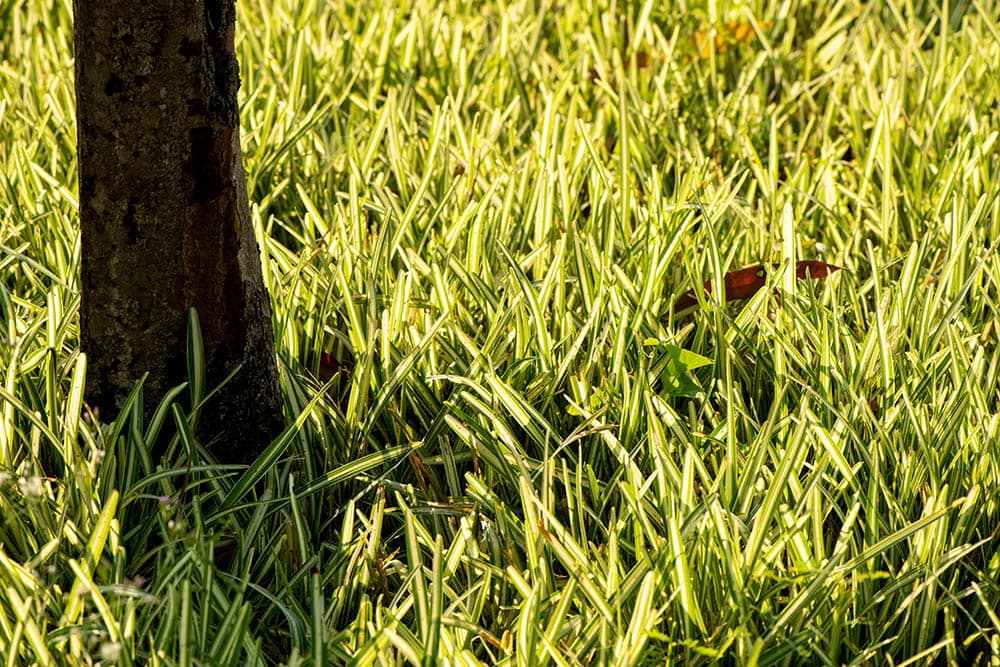
| Color | Light to dark green |
| Mowing Height | 2.5–3 inches |
| USDA Hardiness Zone | 8–10 |
St. Augustine grass is the first grass that does well in Florida. In fact, this is the most common type of lawn grass in the entire state. It grows well in residential and commercial areas in Florida and all over the Southern United States. Its origins are in the Mediterranean region.
This grass thrives in warm climates or anywhere with a humid and subtropical climate. When you want to grow it for a lawn, you have to plant sod
The best time to mow the grass is when the sun is out in summer. Since it grows faster when it’s hot outside, it will require mowing weekly. But in winter, you can mow it every 10 days or so.
The grass thrives in full sun, but it can tolerate a bit of shade. It prefers loamy soil with proper drainage. The soil must be moist, but once the grass is established, it’s drought tolerant.
Apart from growing lawns, St. Augustine grass is also suitable as pasture for grazing animals. Note that there are many types of St. Augustine grass, but the ones listed below would be most ideal for lawns.
- Palmetto
- Seville
- Floratam
- Del-Mar
- Citra Blue
- Pro Vista
- Raleigh
2. Zoysia Grass

| Color | Light to medium green |
| Mowing Height | 1–2.5 inches |
| USDA Hardiness Zone | 5–11 |
Another type of grass you can plant in lawns and commercial areas in Florida is Zoysia grass. Zoysia grass originates from Asia and first arrived in the US in 1895.
While it thrives in warm climates, it’s quite cold-tolerant. Growing starts in late spring and picks up its pace once the temperature rises in summer. Since this is a perennial grass, it goes dormant in winter and comes back the next year when spring arrives. Patience is required since it takes some time before it’s established.
Zoysia grass has a deep root system that conserves water pretty well. This helps it thrive even when it’s too hot and there’s a drought. It often remains green for the duration of drought but will go dormant and turn brown if there’s no end.
The grass loves full sun exposure and can also be shade tolerant. Fertilizer application is necessary during the growing period, but not when the grass goes dormant. Supplementing rain with irrigation can help prevent early dormancy and keep the grass healthy.
There are different types of Zoysia grass that you can grow, including:
- Zoysia matrella
- Zoysia macrantha
- Zoysia japonica
- Zoysia tenuifolia
3. Bermuda Grass
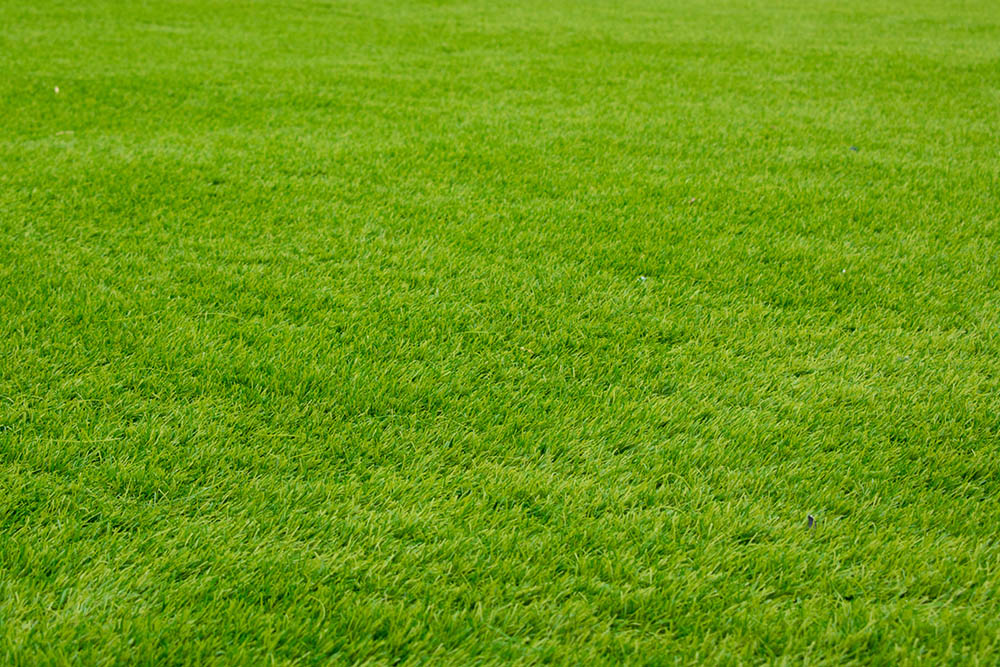
| Color | Dark green |
| Mowing Height | 1–1.5 inches |
| USDA Hardiness Zone | 7–10 |
Bermuda grass does well in Florida because it’s among the hardiest types around. This grass is native to tropical and subtropical parts of the globe. Since around 1807, it has been a grass of choice for lawns in the south.
It tolerates not only heat but also drought conditions. In addition, it can withstand heavy foot traffic and takes little time to recover afterward. It is a resilient grass that is even tolerant to salt.
When it gets cold, Bermuda grass has less tolerance and can develop some issues. However, when the sun is out, the grass has among the fastest growth capacities of turf. It remains green in spring and summer, then goes brown and dormant in winter. The fast-growing rate makes it a high-maintenance type of grass to grow for your lawn. You might need to up your mowing to every 3–4 days per week in the late spring and summer.
This grass suits areas with high foot traffic like sports and athletic fields.
It’s possible to grow Bermuda grass from seeds to an established lawn. However, there are vegetative options in the market like sprigging, sods, and plugs. There are different types of Bermuda grass that you can establish, such as:
- Tahoma 31
- Celebration
- Tifway 419
- Bimini
- Latitude 36
- Tiftuf
- NorthBridge
- Jackpot
- Yuma
4. Centipede Grass
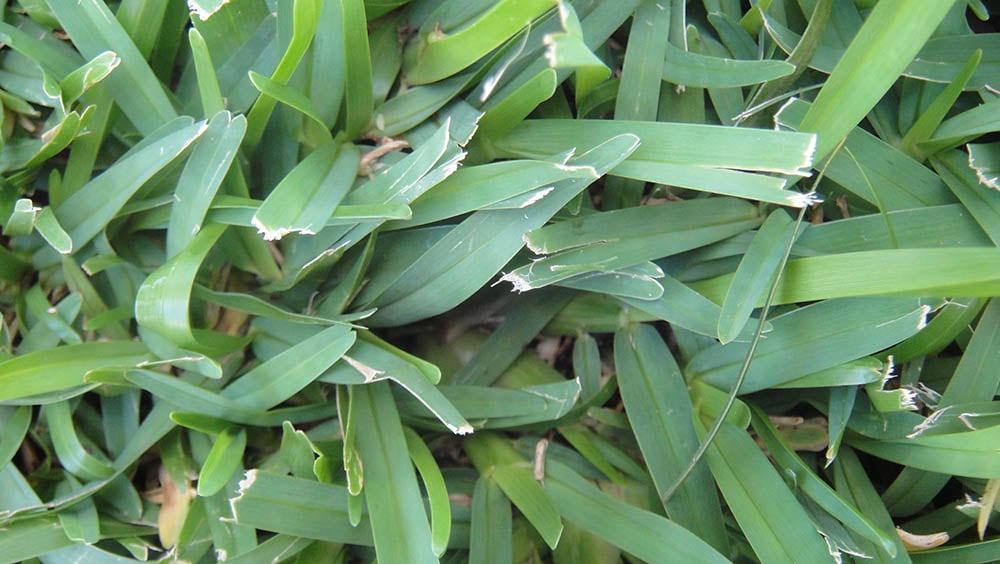
| Color | Light green |
| Mowing Height | 1–1.5 inches |
| USDA Hardiness Zone | 7–10 |
Centipede grass is the epitome of low-maintenance grass that you can grow in Florida. Originally from Southeast Asia and China, Centipede grass has been in the US since 1916.
It thrives during the warmer days at the end of spring and summer. It’s ideal if you want to establish a lawn that you don’t have to keep fussing over. It requires just a little work to keep growing and get established properly.
While there are some types of grass that are cold tolerant, Centipede grass isn’t one of them. It’s best to grow it in well-draining acidic soils. While other grasses have a set duration for winter dormancy, Centipede grass does not. Instead, it can sometimes remain green well into winter, but this kind of exposure leads to damage due to the cold temperatures.
Establishing Centipede grass requires ample patience since it has among the lowest growth rates. It relies on stolons to spread by creeping and establishing a dense lawn area. Too much foot traffic can cause serious damage.
There are different types of Centipede grass, including:
- TifBlair
- Oaklawn
- Tenn Turf
- Centennial
- Santee
- Covington
5. Bahia Grass

| Color | Toad green |
| Mowing Height | 3–4 inches |
| USDA Hardiness Zone | 7–11 |
Bahia grass takes the lead among drought and heat-tolerant grasses grown in Florida. This means you can grow it in areas where other grasses fail due to less moisture. It’s a low-growing type of grass that’s easy to maintain.
While you can use Bahia grass for lawns, it’s also great for pasture in semi-arid areas. It grows well when it’s warm, but it is a perennial with a winter dormancy trait. It grows well in numerous types of soil, including sandy soil. This means you can establish it in many areas with poor soil.
It prefers locations with full sun exposure, but it can tolerate a little shade if necessary. Once you plant the seeds, the grass takes time to grow and develop a deep root system. While other grasses grow densely, Bahia has an open growth system that leaves it susceptible to weeds.
Winter dormancy kicks in when the average temperature starts to fall. The grass turns brown until spring. It will only need a bit of water during the growing stage to maintain its green color.
There are different types of Bahia grass growing in Florida that include:
- Paraguay
- Common
- Pensacola
- Argentine
6. Buffalo Grass
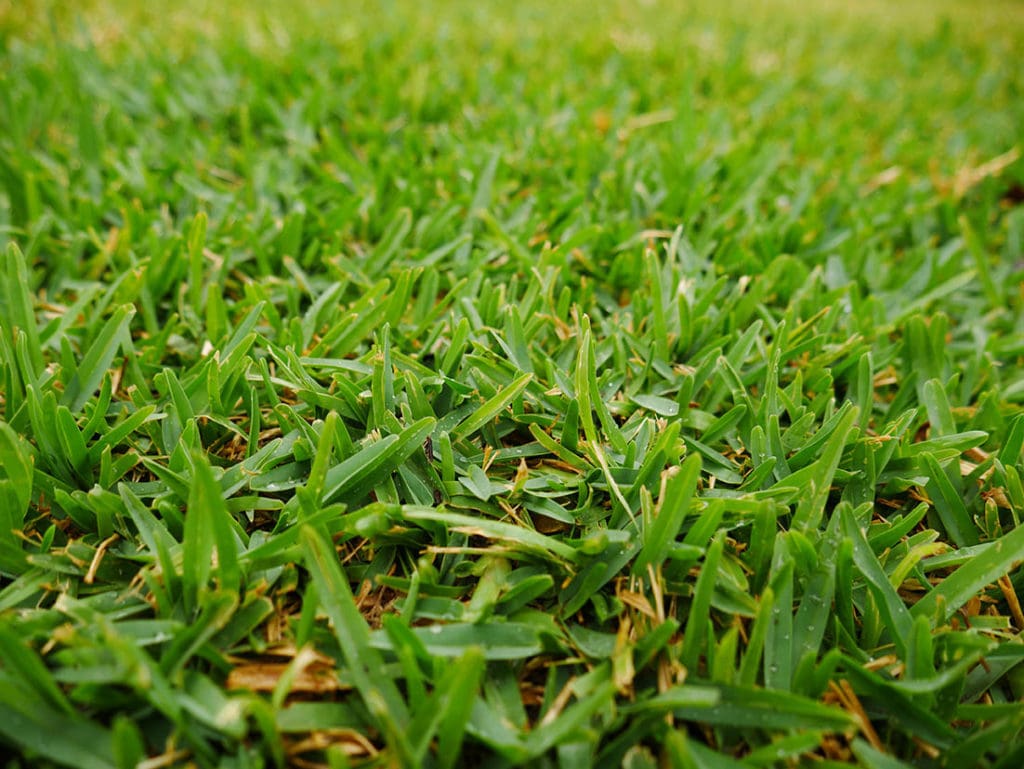
| Color | Blue-green |
| Mowing Height | 2–3 inches |
| USDA Hardiness Zone | 3 |
Buffalo grass has that soft and appealing look that makes it an ideal lawn grass. The good news is this is the best when you want grass with a 70% shade tolerance. It only requires a bit of maintenance once established and not too much water to keep it green.
Its soft blades make it perfect for a calm and relaxed lawn. An established lawn of Buffalo grass has deep root systems, which make it drought tolerant. Dry conditions won’t harm the grass since it often remains green until you water it.
The grass has a good winter color, which is a huge factor for Florida lawns. It manages to retain the green color in winter with the least amount of browning. Even continuous foot traffic and wear won’t harm Buffalo grass.
As a grass species native to North America, it’s also ideal for pasture land where animals graze. The best sowing time is in April or May, using seeds or sod. Once established, you can start mowing your lawn when it grows 2–3 inches long.
The different types of Buffalo grass available are:
- Palmetto
- Prestige
- Sapphire
7. Blue Grama Grass
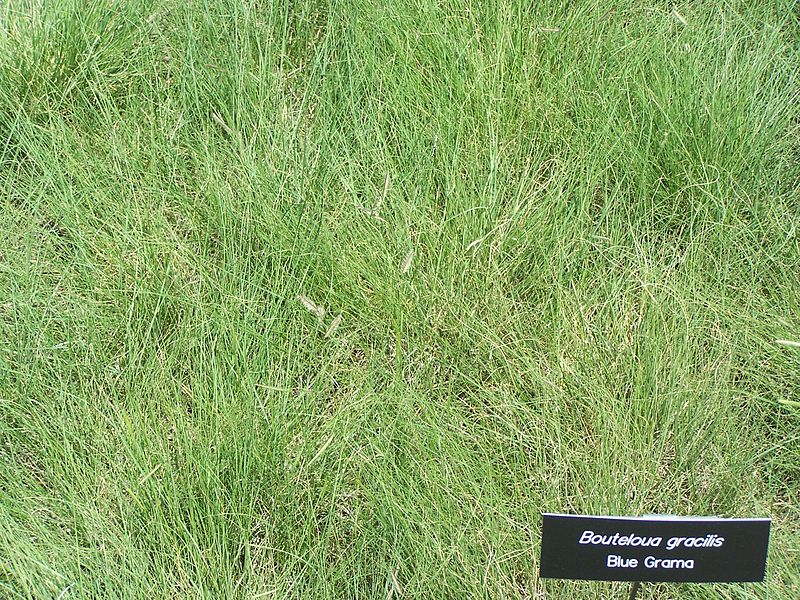
| Color | Blue-green |
| Mowing Height | 2–3 inches |
| USDA Hardiness Zone | 3–10 |
Warm temperature areas, such as Florida, suit the Blue Grama grass. As a native plant, this grass is low maintenance and blends well with other plants. This is a type of bunching grass that grazing animals love to eat out in the pasture lands.
While other types of grass love moist soil, Blue Grama thrives when the ground is dry. It requires full sun exposure and tolerates many different soil types.
If you have a spot that gets too wet, plant any other kind of grass except Blue Grama. Being drought-tolerant means that it can go quite some time without water. It’s a perennial grass, so a time will come each year when winter dormancy kicks in.
In spring, it begins to grow into the fine-leaved turf that’s easy to maintain, only requiring a little fertilizer. Watch out for issues, like rust, that affect the grass during most growing seasons. Types of Blue Grama grass are:
- gracilis
- hirsuta
- B eriopoda
- curtipendula
8. Carpet Grass
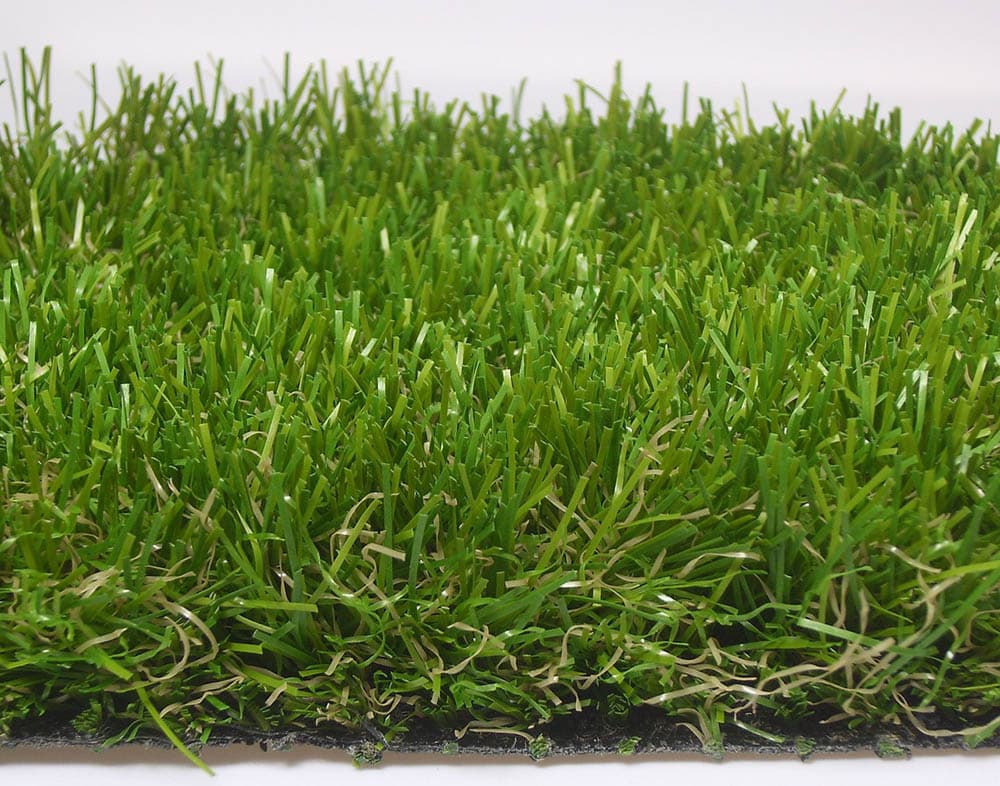
| Color | Yellow-green |
| Mowing Height | 2–3 inches |
| USDA Hardiness Zone | 7–10 |
Carpet grass originates in the Gulf, but it has become quite popular in southern states, including Florida. Creeping stolons are necessary for the grass to spread and establish a lawn or pasture. However, it is better when grown as turf grass rather than a lawn.
One of the reasons carpet grasses won’t work for lawns is the color. It appears yellow-green and can get quite pale as it grows. Plus, it tends to grow sparsely, while lawns require thick grass. When the temperatures drop in winter, the grass turns brown fast.
Still, despite these cons, it’s the best grass to grow in a wet area where many other kinds of grass can’t survive. It’s also a shade-tolerant type of grass and can thrive even in poor soils. You can also grow it in areas that are prone to soil erosion on your land.
Types of carpet grass include:
- Broadleaf carpet grass
- Narrow-leaf carpet grass
9. Seashore Paspalum Grass
| Color | Blue-green |
| Mowing Height | 1–2 inches |
| USDA Hardiness Zone | 8a–11 |
At times, it can be hard to grow grass if the soil is too salty. That’s not an issue when you establish the Seashore Paspalum. This perennial grass grows well in warm climates.
As a tolerant grass, it thrives in not only salty conditions, but also wet parts of the land. This grass is ideal for coastal regions. It’s great for golf courses and other sports fields that may need turf grass.
Seashore Paspalum requires moderate amounts of fertilizer and water. Under the right conditions, the grass blades grow fast, so you might need to mow twice a week. Be careful to reduce damage to the grass since it has a poor recuperation capacity.
Conclusion
There are various types of grass that you can grow in Florida for lawns in residential and commercial areas or for pastures. These types of grass thrive in warm climates where it gets quite hot and dry in the summer. The drought-tolerant grasses are easy to maintain, but most take time to establish and grow. Still, when you have an established lawn, all you need is to mow, add a bit of fertilizer, and you’re good to go.
Featured Image Credit: ArkXp, Shutterstock
Contents


